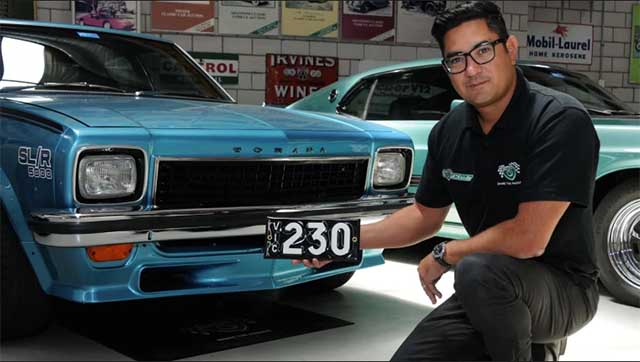
It’s a habit we humans set out to do deliberately: collecting. Be it the stereotype of shoes and handbags through to model cars depicting Peter Brock’s journey from an axe-battered Austin to a VL HDT, we like to find and collect.
Then there are heritage number plates.
Naturally the question is: what’s the link? It’s said that something collectable is worth what someone is willing to pay for it, and heritage number plates are seeing the asking prices rise for certain types as collectors twig that “these are a good thing”.

Collectors have a nose for sniffing out items of value; there are numerous TV shows dedicated to such activities. Scarcity, rarity, and perceived value is what drives collectors and the heritage number plate industry is no different.
For example, in Abu Dhabi a collector purchased a number that was embossed, simply “1”. The settled price? A “mere” seven million pounds sterling.
In the U.K. a collector bought a plate for a Ferrari GTO 250, once owned by Eric Clapton. The collector, a Ferrari trader, paid 518,000 pound sterling for a numberplate with, you guessed it, “250”.
Here in Australia, in early 2018 a Shannons auction in Victoria saw $510,000 handed over for plate number “101”. Earlier in the year “124” went for $268,000.

These pale into insignificance as in a NSW auction, plate number “4” went for $2.68 million.
Christope Boribon, the Shannons national auction manager, believes that these kind of plates are seen as a way of displaying wealth, and status. He feels that there are certain cultural tags attached: “Heritage plates are considered collectible and as a piece of art by some people.”
“There is also a bit of status attached to a historic number plate; if you’re driving around in your $100,000 Mercedes-Benz, and your neighbour rolls up in his $100,000 ‘Benz, the difference might be that you have a $200,000 plate attached to the car.”

Victoria and NSW feature strongest in heritage number plate sales, particularly the earlier plates which denote the very first vehicles to be registered in either state – as far back as 1910. Boribon explains that many of the original numberplates were owned by wealthy families as they were the most likely to have had automobiles when they were released.
In February 2013, top bidding at an auction held by the Roads and Maritimes Services department in Sydney was for NSW "206, 207 and 210". These all had estimates in the $70,000 to $100,000 range.

Numbers that can relate to cars tend to be seen as the more attractive propositions: the 206 plate was most in demand because this is the type number of the Dino 206 GT Coupe.
Do you have a heritage number plate, or know of someone that does? Tell us about it (and we’ll keep names confidential if you wish) via our social media and blog feedback links.